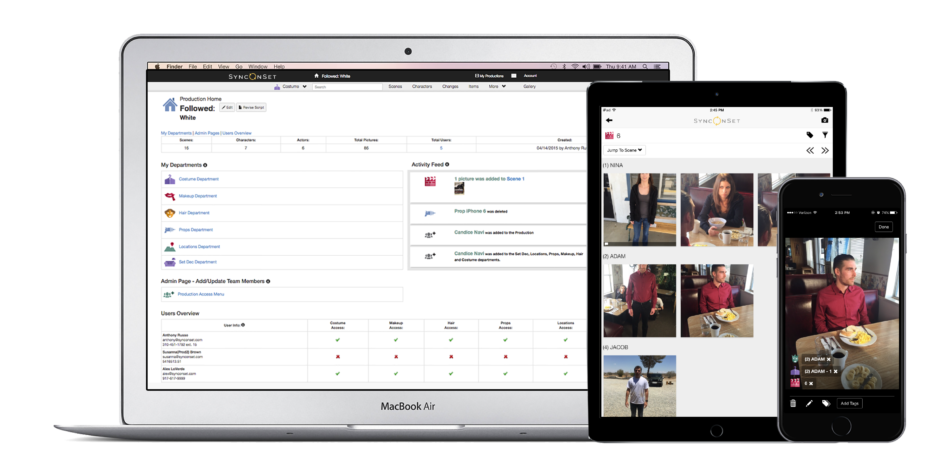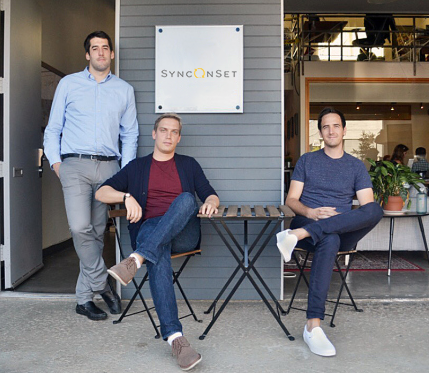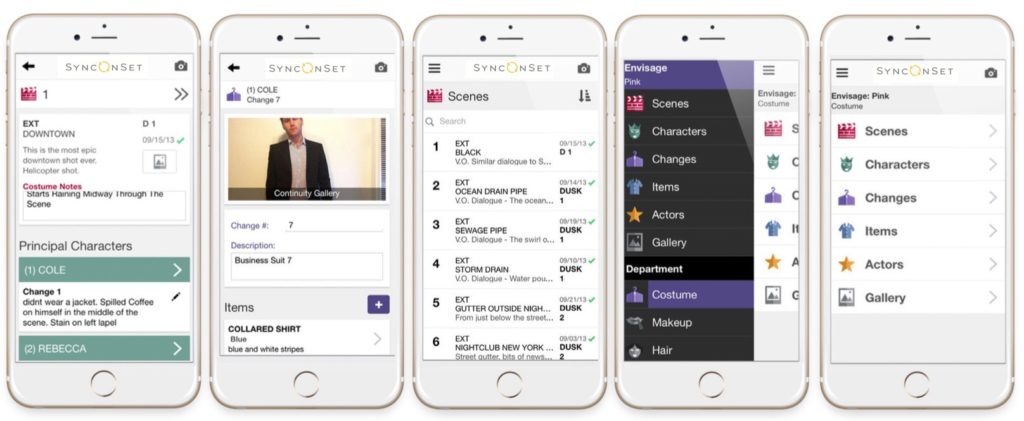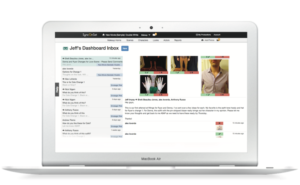Exclusives

SyncOnSet: Digitizing Production Inventory is Just the Start
Story Highlights
A lot of media and entertainment companies come from more mundane origins. Los Angeles-based SyncOnSet (formerly Wymsee) started with a pair of sunglasses.
Years ago, the founders of SyncOnSet were watching Jason Statham in the film “The Mechanic,” wanted to buy his glasses, and began researching a system to identify products that appear on TV. What they found: there wasn’t a way to do this, and in fact, the teams involved in tracking and logging information like what sunglasses an actor is wearing were in dire need of a better way of keeping track of everything.
Since then, SyncOnSet has been used on more than 2,500 productions, and has expanded to also help other departments digitize physical production and manage studios’ creative content.
Co-founders Alex LoVerde (CEO), Jeff Impey (head of operations) and Brett Beaulieu-Jones (CTO) spoke with the Media & Entertainment Services Alliance (MESA) about how production crews use the company’s products, how SyncOnSet goes about security for productions, and what’s next for the company.
 MESA: How did SyncOnSet come about; what was the impetus for the company’s creation?
MESA: How did SyncOnSet come about; what was the impetus for the company’s creation?
LoVerde: We set out to solve the problem of tracking inventory throughout production, and as we interviewed crews, we discovered the best tools they had to do so were all paper-based: sticky notes, printed photos, and three-ring binders.
Crews were spending hundreds of hours manually tracking inventory and breaking down scripts, and they were spending thousands of dollars in photo printing costs, while leaving valuable production data trapped in a binder.
We immediately recognized this as an opportunity to improve upon that paper-based system and create a tool to digitize and organize all of this information. This quickly became much bigger than cataloging clothes on TV, turning into a much-needed solution for digitizing physical production and managing creative content. So it was a simple idea: let’s replace the three-ring binder with professional software.
In just four years, SyncOnSet has been used by over 2,500 productions ranging from ultra-low budget productions to the largest in the industry.
MESA: This sounds like a valuable tool for production crews. Why should studios care about SyncOnSet?
Impey: SyncOnSet was primarily designed with the crew in mind: to make film production more efficient. But if broadly adopted by studios, SyncOnSet can simultaneously solve a major struggle with capturing data from set for downstream purposes.
For example, the design and description of hero costumes used throughout a show can be made seamlessly available for consumer products to use for faster and more authentic merchandising development.
Production crews don’t typically care about downstream purposes; they care about getting their job done on time and on budget. So the key for studios is to offer tools that make the crews’ lives easier — and SyncOnSet can be that tool.
Broadly adopting SyncOnSet encourages faster and more efficient production, greater standardization, and gives studios more control over their content and data.

MESA: What is one of SyncOnSet’s favorite use cases? Are there any studios that have been particularly successful in wide implementation?
Impey: We work with all major studios, but HBO was SyncOnSet’s first enterprise client to adopt SyncOnSet for all productions. HBO eliminated the friction typically associated with adopting software on production and saw a significant increase in usage. To date, SyncOnSet has been used on over 30 HBO productions around the world. Not only has HBO cumulatively saved thousands of man hours in the elimination of redundant data entry, but they are collecting data for future archiving and marketing opportunities
MESA: With security top of mind, especially for shows like ‘Game of Thrones,’ how did you earn the trust of major studios?
Beaulieu-Jones: Beyond just the script, there are extremely sensitive pictures and notes taken throughout production that need to be kept safe and secure. With this critical information in a three-ring binder that anyone on set can access, and with literally no back-up, there was a major production risk that Studios unfortunately had to accept for a long time. Keeping crew members on one closed-loop digital system ensures that information is safely stored, backed-up, and can only be accessed or shared based on specific credentials and permissions. This allows for greater accountability and auditing than previously possible.
To ensure we’re staying at the cutting edge and exceeding industry best practices, SyncOnSet undergoes regular third-party security audits. As we grow, we see security as a major selling point for Studios, and so we invest heavily to innovate and constantly add new content protection features.
For example, we recently added the ability to watermark all continuity and fitting photos and specify user device limits, which allows studios to have complete control over who can access what information, when, and how. We see security measures like this becoming a new standard for billion-dollar franchises, where preventing a leak is absolutely crucial.
 MESA: What are some of the downstream possibilities for studios that implement SyncOnSet? What can we expect next from you guys?
MESA: What are some of the downstream possibilities for studios that implement SyncOnSet? What can we expect next from you guys?
LoVerde: We see big opportunity in the data from set. SyncOnSet tracks all sorts of content and metadata (scene-level data about characters, inventory, continuity photos, wrap box information) that is valuable to many different divisions within a Studio including finance, marketing, and archives. We are currently working with Studios to design an asset management system that seamlessly connects with SyncOnSet and into existing studio workflows.
By tracking production information in one standardized system, we’ll be able to pull together unprecedented views and insights for Studios to analyze and visualize their assets.
We also see exciting opportunities by integrating our workflow with other production software vendors and financial systems. There’s an exciting amount of activity among other companies innovating on scripts and dailies, but there’s also still so much that could be improved upon and synced on set.









